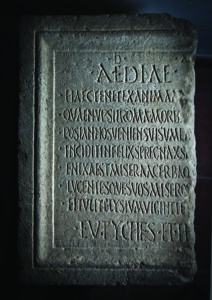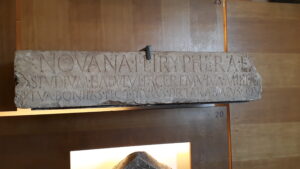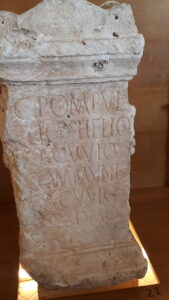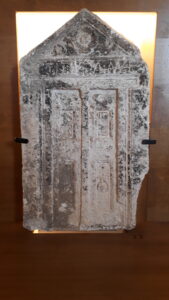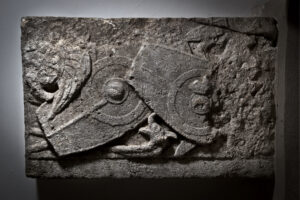ARTS
The arts section primarily comprises two examples of poetic epitaphs. Other significant samples illustrate the good level of local crafts in the field of sculpture. The production of good quality funerary altars is documented in Alba Fucens, while the typology of the stele with door appears characteristic of the whole area around the Fucino, between 1st century B.C. and the 1st century A.D.
The symbolic meaning of this representation recalls the “dwelling”: the door represents the passage from life to death, the entrance to the afterlife.
Another typical production of the area, and more precisely to be located in Marruvium (S. Benedetto) is that of funerary stones with a cylindrical column with a cap top hemispherical on which a snake is curled up.
